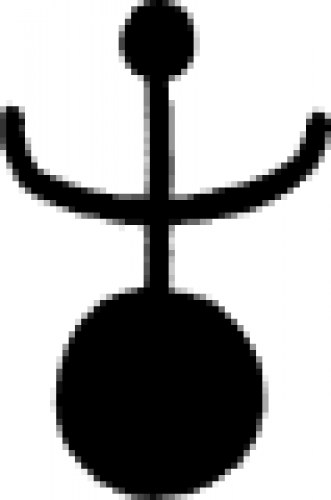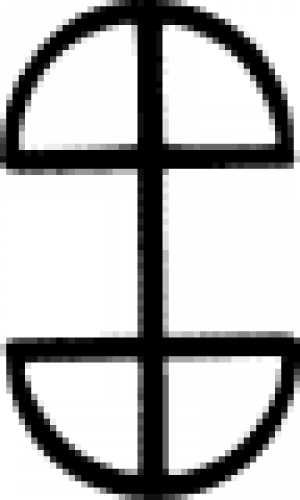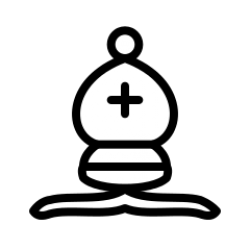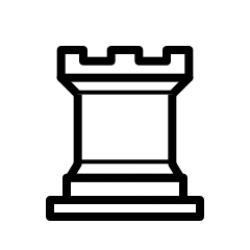Miscellaneous Page #15
This page lists all the various symbols in the Miscellaneous category.
Symbols without any special category attribution but that are widely used worldwide.
Symbols in this category:
Val Camonica #6
One of many ancient carvings discovered on the face of Val Camonica in the southern area of the Alps (Italy). No contextual information known at this time.
Val Camonica #7
One of many ancient carvings discovered on the face of Val Camonica in the southern area of the Alps (Italy). No contextual information known at this time.
Valais #1
A prehistoric rock carving found in the area of Valais in southwestern Switzerland. No contextual information known at this time.
Valais #2
A prehistoric rock carving found in the area of Valais in southwestern Switzerland. No contextual information known at this time.
Viascón #1
A Bronze Age carving from Viascón in Galicia, northwestern Spain. No contextual information known at this time
Viascón #2
A Bronze Age carving from Viascón in Galicia, northwestern Spain. Appears to be a version of the swastika.
White King
In chess, the king (♔, ♚) is the most important piece. The object of the game is to threaten the opponent's king in such a way that escape is not possible (checkmate). If a player's king is threatened with capture, it is said to be in check, and the player must remove the threat of capture on the next move. If this cannot be done, the king is said to be in checkmate, resulting in a loss for that player. Although the king is the most important piece, it is usually the weakest piece in the game until a later phase, the endgame. Players cannot make any move that places the king in check.
White Bishop
A bishop (♗,♝) is a piece in the board game of chess. Each player begins the game with two bishops. One starts between the king's knight and the king, the other between the queen's knight and the queen. In algebraic notation the starting squares are c1 and f1 for White's bishops, and c8 and f8 for Black's bishops.
White Knight
The knight (♘ ♞) is a piece in the game of chess, representing a knight (armored cavalry). It is normally represented by a horse's head and neck. Each player starts with two knights, which begin on the row closest to the player, one square from each corner.
White Pawn
The pawn (♙♟) is the most numerous piece in the game of chess, and in most circumstances, also the weakest. It historically represents infantry, or more particularly, armed peasants or pikemen. Each player begins a game of chess with eight pawns, one on each square of the rank immediately in front of the other pieces. (In algebraic notation, the white pawns start on a2, b2, c2, ..., h2, while black pawns start on a7, b7, c7, ..., h7.)
White Queen
The queen (♕,♛) is the strongest piece in the game of chess, able to move any number of squares vertically, horizontally or diagonally. Each player starts the game with one queen, placed in the middle of the first rank next to the king. Because of the value of a queen, it is sometimes used as bait to lure an opponent into a trap by a queen sacrifice. Another tactic is to use the queen to threaten the opponent's queen, to either retreat or to exchange the queen (losing both of them) to reduce the game to less strong pieces. The queen is often used in conjunction with another piece, such as teamed with a bishop or rook, where the pieces could guard each other while threatening the opponent pieces.
White Rook
A rook (♖ ♜ borrowed from Persian رخ, rokh) is a piece in the strategy board game of chess. Formerly the piece was called the tower, marquess, rector, and comes (Sunnucks 1970). The term castle is considered informal, incorrect, or old-fashioned. However, in Persian the word for "castling" is qal'eh raften (from qal'eh, "castle") and not rokh raftan.
Each player starts the game with two rooks, one in each of the corner squares on their own side of the board.
Citation
Use the citation below to add this symbols category to your bibliography:
Style:MLAChicagoAPA
"Miscellaneous Symbols." Symbols.com. STANDS4 LLC, 2024. Web. 4 Dec. 2024. <https://www.symbols.com/category/16/Miscellaneous>.

















Have a discussion about the Miscellaneous category with the community:
Report Comment
We're doing our best to make sure our content is useful, accurate and safe.
If by any chance you spot an inappropriate comment while navigating through our website please use this form to let us know, and we'll take care of it shortly.
Attachment
You need to be logged in to favorite.
Log In